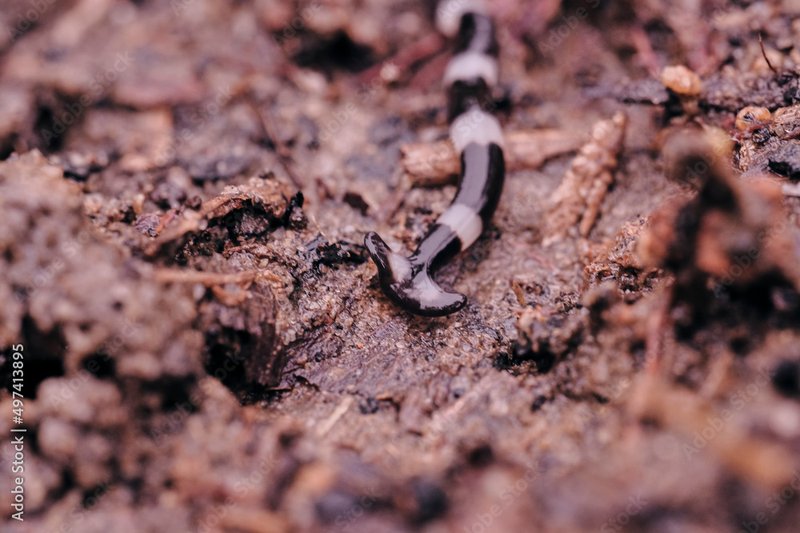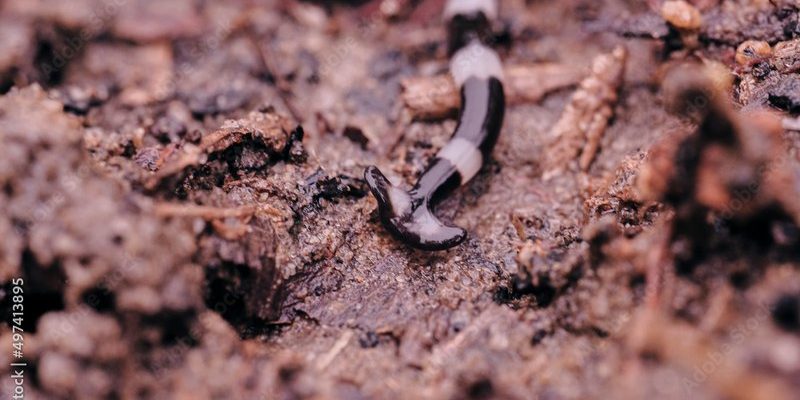
Hammerhead worms, with their distinctive flattened heads and striking colors, aren’t exactly your average earthworm. Originally from tropical regions, these predators have made their way into different areas, often hitching rides on plants. And while nematodes might seem like tiny, harmless creatures, they’re vital for nutrient cycling and soil structure. So, how does the arrival of hammerhead worms impact these little guys? Let’s dig deeper.
What Are Hammerhead Worms?
Hammerhead worms belong to the predatory flatworm group known as the **Bipalium**. They’ve gained their name due to the unique shape of their heads, which resemble a hammer. These worms can vary in color—from brown and black to vibrant shades of orange and green. Depending on the species, they can grow quite large, with some reaching lengths of over a foot.
One of the fascinating things about hammerhead worms is their reproductive abilities. They can reproduce both sexually and asexually, which allows their populations to explode quickly under the right conditions. This adaptability is what makes them so successful in invading new habitats. You might be wondering what they eat. Well, hammerhead worms primarily prey on critters like **earthworms**, **slugs**, and yes, even soil nematodes.
As these worms spread, they can drastically alter the local ecosystem, leading to questions about how this affects the delicate balance of life in the soil.
Understanding Soil Nematodes
Soil nematodes are microscopic roundworms that play crucial roles in the ecosystem. They help decompose organic matter, cycle nutrients, and even contribute to plant health by controlling harmful pathogens. These nematodes can be classified into different types, including **plant-parasitic**, **bacterivorous**, and **fungivorous** nematodes.
Plant-parasitic nematodes are the ones that might give gardeners nightmares since they can damage crops. However, the other types are generally harmless and beneficial, promoting soil health. In essence, much like how you would want a mix of good friends, beneficial nematodes help maintain balance in the soil.
The presence and activity of nematodes are also indicators of soil health. A diverse nematode community usually signifies a well-balanced ecosystem, while a decline in their population might signal a problem. So, what happens when hammerhead worms show up?
The Predator-Prey Relationship
Let’s get to the heart of the matter. Hammerhead worms are hunters, and one of their favorite snacks is soil nematodes. When these voracious predators invade an area, they can significantly reduce the nematode population. Since nematodes play a vital role in soil health, this can lead to some concerning consequences.
You might be thinking, “Isn’t this just nature taking its course?” While that’s true, the problem arises when hammerhead worms suddenly appear in large numbers. They can disrupt the natural balance, leaving behind a weakened soil ecosystem.
A decline in nematodes not only affects nutrient cycling but can also make the soil less resilient against diseases. Just like if you took away the key players in a sports team, the remaining players would struggle to perform effectively.
How Hammerhead Worms Affect Soil Health
The impact of hammerhead worms extends beyond just eating nematodes. Their presence can change soil properties and the overall health of the ecosystem. With fewer nematodes, the rates of soil decomposition and nutrient cycling can slow down. As a result, plants may struggle to get the nutrients they need to thrive.
In agricultural settings, this can lead to decreased crop yields. Imagine planting seeds with high hopes only to find that your soil isn’t giving them the love they need. That’s a reality for some farmers dealing with hammerhead worm invasions.
Moreover, the disruption of beneficial nematodes can create an opening for harmful pests or pathogens. Just like weeds that take over a garden, when beneficial organisms decline, their harmful counterparts may find it easier to invade. This shift can lead to increased reliance on pesticides, which brings its own set of environmental concerns.
Signs of Hammerhead Worm Infestations
You might not see hammerhead worms every day, but there are signs that they’ve set up camp in your soil. One of the main indicators is the sudden decrease in beneficial organisms, particularly nematodes. A garden or lawn that once thrived may start to show signs of distress, such as yellowing leaves or stunted growth.
If you’re curious whether hammerhead worms are present, keep an eye out for:
- Visible worms: Look for flat worms, especially with their distinctive hammer-shaped heads.
- Decreased soil health: If plants aren’t thriving as they should, it might be worth investigating.
- Soil disturbances: Hammerhead worms can cause changes in soil texture as they hunt for prey.
Understanding these signs can help you act quickly if you suspect a problem.
Combating Hammerhead Worms
If you discover that hammerhead worms have invaded your garden or soil, you might want to take action. Here are a few strategies to manage their population:
1. **Hand Removal:** This can be effective in smaller gardens. Just wear gloves and gently remove them—making sure to dispose of them properly.
2. **Encourage Beneficial Predators:** Birds and other wildlife can help keep hammerhead populations in check. Creating habitats that attract these natural predators can be beneficial.
3. **Soil Health Management:** Maintaining healthy soil with a good balance of organic matter can help support nematode populations. You might consider adding compost to enrich your soil.
4. **Monitoring and Research:** Keep records of changes in your garden. Understanding what works can help you strategize for the future.
Here’s the thing: tackling hammerhead worms isn’t just about battling a pest. It’s about fostering an environment where all the organisms can thrive together.
Understanding the **impact of hammerhead worms on soil nematodes** is crucial for maintaining a healthy ecosystem. These invaders disrupt the balance of beneficial organisms, leading to potential soil health issues and reduced plant growth. While hammerhead worms might seem like just another oddity of nature, their effects rippled through your garden can be significant.
By keeping an eye out for signs of their presence and taking proactive measures, you can help preserve the delicate balance of your soil ecosystem. After all, it’s all connected—just like the threads in a tapestry, each organism plays an essential role in the bigger picture of soil health. Stay informed, take action, and your garden will thank you!

